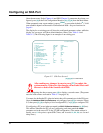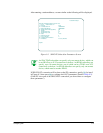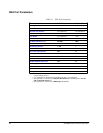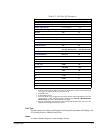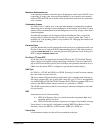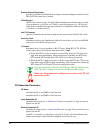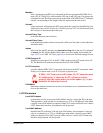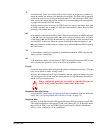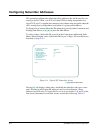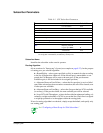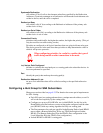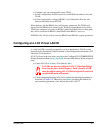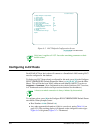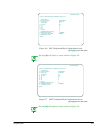
9-12 SmartSwitch 1800 4.0 User Guide, Rev 01
IDBLK
is used in conjunction with
IDNUM
in generating the Node field in an XID frame
(format 0 or 3) to establish a link station connection to the host. A further explanation
is provided under "
IDNUM
."
IDNUM
is used in conjuction with
IDBLK
in generating the Node field in an XID frame (format
0 or 3) to establish a link station connection to the host. If both
IDBLK
and
IDNUM
are
set to
0
, the Node field of the XID will be provided by the attached SDLC device. (The
node will send an XID command to the remote node to indicate that the SDLC device
should be polled for an XID.)
T1
is the Reply Timer, used to detect the failure to receive a required acknowledgment or
response from the remote link station. The link station will start the timer when it
transmits one of these:
●
an Information LPDU (LLC protocol data unit).
●
a Command LPDU with the P bit set to
B'1.'
(If this LPDU is sent while the timer
is already running, the link station will reset and restart it.)
The link station will reset
T1
when it receives one of these:
●
A REJ (Reject) LPDU, provided a Command LPDU with P bit set to
B'1'
is not
outstanding.
●
A Response LPDU with the F bit set to
B '1.'
●
An Information or Supervisory LPDU with an N
R
greater than the last N
R
received and less than or equal to the line station's V
S
, provided a Command
LPDU with P bit set to
B'1'
is not outstanding.
If additional LPDUs are set from the remote link station after the local station has reset
T1
, the timer will be restarted if acknowledgments of or responses to those LPDUs are
outstanding. If no acknowledgments/responses are outstanding, the link station will
start the inactivity timer. (See "
Ti
.")
If
T1
expires and acknowledgments/responses are still outstanding, the link station
will send one of the following, then restart
T1
:
●
A Supervisory LPDU with the P bit set to B'1,' to solicit remote link station
status.
●
Any Unnumbered LPDUs that were not acknowledged when first sent.
If acknowledgments/responses are still outstanding after
N2
tries (see that entry), the
link station will declare the link inoperative.
The value specified for
T1
should allow for any delays introduced by the MAC sub-
layer (e.g., queuing).
T2
is the Receiver Acknowledgment Timer, used by the link station to delay sending an
acknowledgment of a received Information LPDU. The timer is started when the
LPDU is received and reset when the acknowledgment is sent. If the timer expires
before the acknowledgment is sent, it must be sent as soon as possible.



